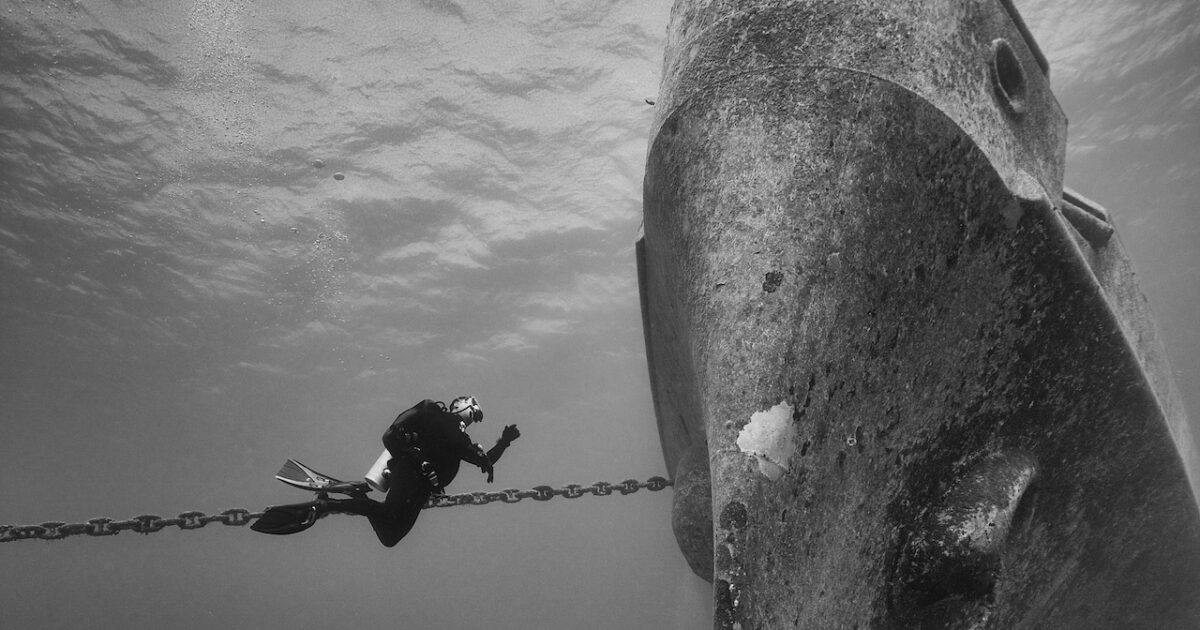Standing at the nexus of conservation and digital responsibility, Greg Piper knows a thing or two about the conundrums of modern life. As an influencer on social media and a world-renowned wildlife and marine photographer, the lensman has built a career out of showing everyday people extraordinary things, and doing so responsibly.
But with over 215,000 Instagram followers, Piper understands that with great influence comes great responsibility. That’s why the lauded photographer and BARE ambassador makes it his mission to educate his followers and inspire them to make better choices when exploring outdoors.
Over the last 10 years, Piper has logged over 1,700 dives at Truk Lagoon. He often goes twice a year, and the process of visiting over the past decade has turned Greg into a passionate wreck diver. Recently, Piper penned a series of articles across several dive magazines addressing the deteriorating state of the wrecks at Truk. As he says, the ships are “basically decomposing, slowly rusting away.”
Why? Piper says that at the 70-year mark, warm, temperate saltwater finally sinks its claws into the sunken ships’ steel, leading them to rust and corrode at a high decomposition rate.
“We’ve seen that at Truk in the past few years. The ships had been under 75 years, but in the last six months—over my last two trips—there was more devastation and more collapse than at any other period of time over the past years’ prior.
Combined with the WWII wrecks at Truk entering a rapid period of decomposition, Piper says that these natural problems are also being exacerbated by a new worldwide middle class hungry for selfies, marine photography and social media cred.
“You have people being irresponsible,” Piper says. “For instance, in March, a girl sat on the tail of an airplane—and broke it off. I see people sitting in the wrecks all the time, and it’s crazy.”
“People want to see the wrecks as they naturally lie. They want to create the story for themselves of what went down in the ship. But every time we open a crate of ammunition to show people or we move relics around or we take them, it just lessens the experience. We have to change the mindset and let people know—including the guide that, ‘Hey: This is unethical!'”
Another layer of the problem is that, in the case of the Truk wreck scene, many of the guides have a financial incentive (gratuity) to practice poor ethics. “They get tips, and they want that gratuity,” Piper says, “so until you start educating divers and saying, ‘if you want these things to be here in 10 more years, then ask your guides not to touch them, ask them not to break open cases of ammo.'”
On the Sankisan Maru, Greg continues, crates of ammo used to be stacked 10 high—now there’s none left. Instead, there are thousands of bullets laying at the bottom of the hold.
So, what role does social media play in all of this? How does Greg balance the need to get the shot with his ethics? Part of the answer is that many of Greg’s shots take an enormous amount of preparation and patience to pull off in a less impactful manner. When an everyday dive sees those shots, however, the seed for future impacts is planted. In essence, his shots often become bucket-list shots for other divers.
“People just want a copy of other peoples’ photographs—social media drives these images,” Greg explains. “They spent $10 or $12K on this trip and they have to get the shot and don’t get to come back—no one is paying them to come back and do it next year.”
“If you go on social media,” he continues, “you’ll see someone get a really incredible shot, whether they’re trained or just got lucky, and for months after, you’ll see people copying those shots.”
A recent international incident further worsened the problem when an American diver desecrated the skull of a Japanese sailor—in a viral photo. An official from the Japanese government discovered the image and a large diplomatic quagmire ensued. Up to that point, Japanese war remains were very common at Truk. But shortly after the incident, 147 remains were removed from the area.
“This is what happens when you take people and you put ’em places like this and give them access to places like this,” Piper explains. “Not everyone has common sense, and even fewer people know how to exercise good judgement.”
Coming away from the conversation, what are some actionable tips for lessening one’s impact while diving and traveling?
It’s always good to be conscientious of the way you travel. Carry a reusable bottle and try to spend money locally in the places you’re visiting. Leave the selfie stick at home, or better yet, don’t buy one at all.
If underwater photography is your hobby, practice common sense and Leave No Trace principles at all times. Do not harass aquatic wildlife and manipulate the composition of the reef for the benefit of a picture. And for goodness’ sake, tip your guides—even if they don’t deliver on the perfect picture.











